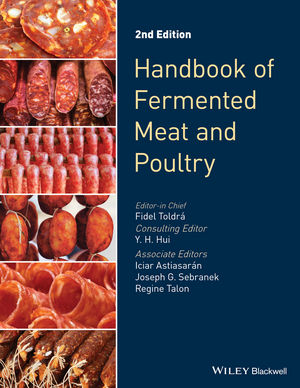Special Report: Regulatory Update
Impact of Trump Administration on food regulation still unfolding
Despite short-term uncertainty, it remains unclear how a second Donald Trump Administration will impact the food and agriculture industry in the US and abroad for the long term.

It remains unclear how a second Donald Trump Administration will impact the food and agriculture industry in the US and abroad.
The Administration's funding freezes under its Elon Musk-led Department of Government Efficiency quest to remake government haven't spared the ag and food industries. US Department of Agriculture announced cuts of more than $1 billion in funding for schools to purchase local food.
Agriculture was not front and center in this election cycle. Trump repeatedly stated he plans to enact tariffs on imports, which has put the agriculture industry on alert for potential retaliation against its products.
China responded to new U.S tariffs announced by the Trump Administration in early March by saying it will impose additional tariffs of up to 15% on imports of US beef, chicken and pork. The move followed Trump’s order to raise tariffs on imports of Chinese products to 20% across the board.
“Trump’s return will result in policy shifts creating a complex landscape for global food and agricultural trade,” according to a new report from Rabobank, Trump 2.0: Impacts on Global Food and Agriculture. “The implications of these changes include potential disruptions to established trade relationships, shifts in export demand, and rising costs for consumers and businesses, highlighting a balance that will shape inflation, consumer behavior, and international trade dynamics.” Trump’s proposed universal tariff on US imports and a stiff import tariff on Chinese goods will result in retaliatory tariffs by China and other affected countries.
“The impact depends on the breadth and the ultimate tariff levels applied in the US, which will determine the severity of the retaliation,” said Roland Fumes, head of RaboResearch Food & Agribusiness-North America, and the report’s lead author. In his first term, during the trade war with China, Trump gave farmers payments to offset their losses as exports to China plummeted.
Globally, Brazil will benefit from an escalation of a US-China trade war while Europe, Africa and Southeast Asia could see limited, manageable negative impacts depending on the level of trade disruption and the adaptability and flexibility of specific value chains, Fumes said.
Cattle outlook
The availability of Mexican/Canadian beef and pork in the US will reduce price pressure. In February 2025, US Department of Agriculture's Animal and Plant Health Inspection Service announced the resumption of cattle and bison imports from Mexico. Senate Majority Leader John Thune, R-S.D., and Sen. Cory Booker, D-N.J., reintroduced the American Beef Labeling Act on Feb. 5, which looks to reinstate Mandatory Country of Origin Labeling (MCOOL) for beef.
With drought and high input costs compelling farmers to market a higher-than-normal percentage of female cattle, the most recent cattle inventory dropped to lows not seen in decades. As of Jan. 1, 2025, inventory is the lowest inventory since 1951. The calf crop estimated at 33.6 million head, down 2% from last year, and the smallest calf crop since 1948.
Pork production space limitations put into practice in 2024 by laws going into effect in California and Massachusetts will continue to affect production models in other states. This will increase the price of raising pork in numerous states.
Food regulation
Regulatory changes and funding challenges will change the current regulatory priorities affecting the food industry. An influential role for US Health and Human Services Secretary Robert F. Kennedy Jr. -- whom Trump has promised significant control over health and food safety policy -- is likely to further complicate the direction of agencies like the Food and Drug Administration.
FDA’s existing goals -- outlined in the 2025 priorities established by the recently launched Human Foods Program – could soon be replaced by a vastly different approach to food regulation, affecting food safety, labeling and ingredients.
Kennedy is expected to bring a contrasting perspective to food policy, with his long history of food and nutrition advocacy at times diverging sharply from Trump’s conservative framework. Under the slogan ‘Make America Healthy Again,’ Kennedy has publicly championed efforts to restrict ultra-processed foods, seed oils and pesticides, arguing that these products contribute to chronic disease. He has also been a vocal opponent of genetically modified foods, pushing for tighter regulations on GMO ingredients and reduced reliance on pesticides, which he argues have not been adequately evaluated for safety.
Trump’s first term was marked by significant deregulation across food safety and nutrition, and these priorities may re-emerge in his second administration. In his previous tenure, the FDA’s food safety enforcement declined, with warning letters – one of the agency’s main tools for preventing unsafe products from entering the market – dropping by 37%.
Impact of Trump’s executive orders
During his first day in office, Trump issued a flurry of executive orders, including an order titled “Regulatory Freeze Pending Review” mandating a halt on all rulemaking and new regulations across federal agencies until reviewed and approved by agency heads appointed by Trump. The agencies will need to review all pending rules to ensure they align with the new Administration's policies. This review process could lead to modifications or cancellation of some regulations.
Of particular impact to the meat and poultry industry’s small processors, federal payments or reimbursements on millions of dollars in grant funding has been frozen due to Trump’s executive orders.
These grants include MPIRG (two rounds), MPEPP (two rounds), Local MCap, and the Indigenous Animals Harvesting and Meat Processing Grant Program grants. Other related grants to meat producers and processors, such as the Value-Added Producer Grants, Local Food Promotion Program grants, Renewable Energy for America Grants, NRCS grants, and others have effectively been frozen as of early March. 2025.
Looking for a reprint of this article?
From high-res PDFs to custom plaques, order your copy today!








